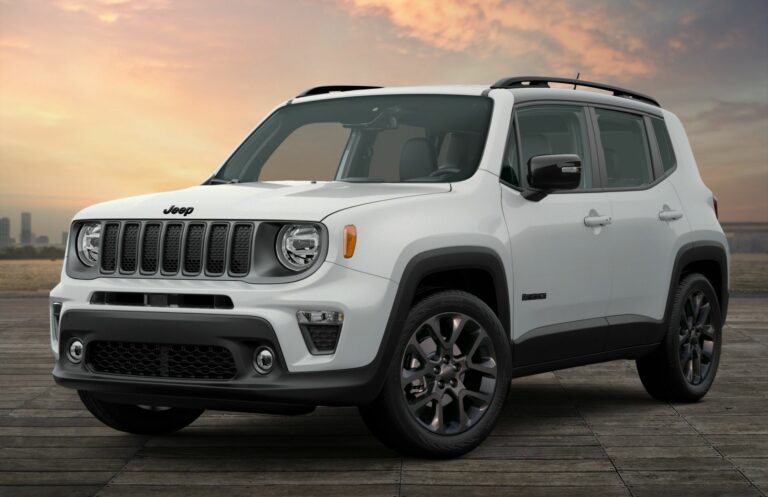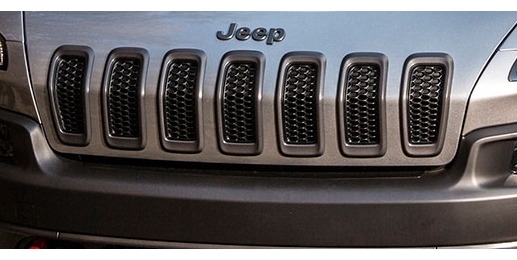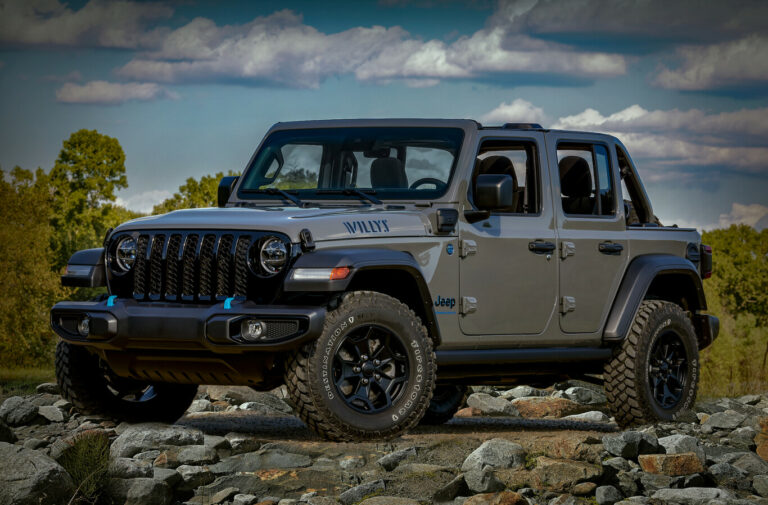The Enduring Icon: Exploring the 1993 Jeep Cherokee (XJ)
The Enduring Icon: Exploring the 1993 Jeep Cherokee (XJ) jeeps.truckstrend.com
In the annals of automotive history, few vehicles command the enduring respect and fervent loyalty enjoyed by the Jeep Cherokee XJ. Among its storied production run, the 1993 model year stands out as a quintessential representation of this iconic SUV. It embodies a perfect blend of rugged simplicity, surprising capability, and a timeless design that continues to captivate enthusiasts and off-road adventurers alike. Far from being just another used car, the ’93 Jeep Cherokee is a testament to utilitarian design, engineered for purpose and built to last, making it a highly sought-after vehicle even three decades after its debut.
This comprehensive guide will delve into what makes the 1993 Jeep Cherokee a beloved classic, exploring its mechanical prowess, design philosophy, common considerations for ownership, and why it remains a compelling choice for a diverse range of drivers today.
The Enduring Icon: Exploring the 1993 Jeep Cherokee (XJ)
A Brief History of an Icon
The Jeep Cherokee XJ, first introduced in 1984, revolutionized the SUV market. It was one of the first truly modern SUVs, pioneering the unibody construction in this segment – a significant departure from the traditional body-on-frame designs prevalent at the time. This innovative approach resulted in a lighter, more agile, and more fuel-efficient vehicle without sacrificing its legendary off-road capability.
By 1993, the Cherokee XJ was well into its stride, having received several refinements since its initial launch. It represented a mature iteration of the original design, prior to the more significant facelift that would occur later in the decade. The ’93 model year benefits from years of incremental improvements, making it a reliable and robust choice that embodies the XJ’s peak blend of classic charm and proven engineering.
Powerplants and Drivetrains: The Heart of the Beast
The true soul of the 1993 Jeep Cherokee lies beneath its hood, offering a choice of two primary engines, each paired with durable transmission and transfer case options.
1. The Legendary 4.0L High Output (HO) Inline-Six:
This is, without a doubt, the most celebrated and sought-after engine for the XJ. Known for its incredible durability, robust torque output (around 220 lb-ft), and respectable horsepower (190 hp), the 4.0L HO is an absolute workhorse. It provides ample power for highway cruising, towing, and, most importantly, conquering challenging off-road terrain. Its relatively simple design makes it highly reliable and straightforward to maintain, earning it a near-mythical status among Jeep enthusiasts. If you’re considering a ’93 Cherokee, this is the engine to look for.
2. The 2.5L AMC Inline-Four:![]()
While less common and certainly less powerful (around 130 hp), the 2.5L four-cylinder offered a more fuel-efficient option for those who didn’t require the brute force of the 4.0L. It’s a capable engine for lighter duties and milder off-roading, but its performance on the highway or with heavier loads can feel somewhat strained. It’s generally reliable but lacks the charisma and power of its larger sibling.
Transmissions:
- Aisin-Warner AW4 Automatic: Paired almost exclusively with the 4.0L engine, this 4-speed automatic transmission is renowned for its durability and smooth, reliable shifts. It’s a robust unit that can handle significant abuse, making it a popular choice for both daily driving and serious off-road adventures.
- Aisin AX-15 Manual: Available with both the 4.0L and 2.5L engines, this 5-speed manual transmission offers a more engaging driving experience and is favored by purists for its direct control and ruggedness. Like the AW4, it’s a very reliable gearbox.

Transfer Cases:
- NP231 Command-Trac: This part-time 4WD system is the most common and robust. It offers 2WD, 4WD High, Neutral, and 4WD Low. Its simplicity and strength make it ideal for dedicated off-road use, though it should not be used on dry pavement in 4WD modes.
- NP242 Selec-Trac: A more versatile full-time 4WD system, the NP242 adds a "Full-Time 4WD" option that can be used on any surface, including pavement. It also includes the part-time 4WD High and Low ranges. This system is excellent for varied conditions, offering the convenience of AWD for snowy roads while retaining serious off-road capability.

Design Philosophy: Form Follows Function
The 1993 Jeep Cherokee’s design is a masterclass in functional aesthetics. Its boxy, angular lines are instantly recognizable and have stood the test of time, proving that genuine utility never goes out of style.
Exterior: The XJ’s compact dimensions belie its interior space and off-road prowess. Its short overhangs, particularly at the front, contribute to excellent approach and departure angles, crucial for navigating challenging terrain. The simple, uncluttered design means fewer parts to break and easy access for maintenance or modification.
Interior: Step inside a ’93 Cherokee, and you’re greeted by a utilitarian yet surprisingly comfortable cabin. The focus is on durability and practicality. While not luxurious by modern standards, the materials are robust, and the layout is intuitive. Visibility is excellent thanks to the large windows, and despite its external dimensions, there’s a surprising amount of headroom and cargo space, especially with the rear seats folded down. It’s an interior designed for adventure, capable of shrugging off mud, dust, and daily wear.
Unmatched Off-Road Prowess (Stock & Modified)
The XJ Cherokee’s reputation as an off-road champion is well-earned. Even in stock form, its combination of solid axles (Dana 30 front, Dana 35 or Chrysler 8.25 rear), a relatively short wheelbase, and favorable approach/departure angles allows it to tackle trails that would stop many larger, more complex SUVs.
What truly sets the XJ apart, however, is its immense potential for modification. Its simple architecture and vast aftermarket support make it a blank canvas for customization. From modest lift kits and larger tires to heavy-duty bumpers, rock sliders, and advanced suspension systems, the ’93 Cherokee can be transformed into an extreme trail rig or a comfortable overland vehicle, limited only by the owner’s imagination and budget.
Common Issues and Preventative Maintenance
While the ’93 Cherokee is renowned for its reliability, like any vehicle of its age, it has specific quirks and common wear points that prospective owners should be aware of. Addressing these proactively can ensure a long and happy ownership experience.
- Rust: This is the primary enemy of the XJ, especially in regions that use road salt. Inspect rocker panels, floorboards, rear quarter panels, and the frame rails (unibody rails) thoroughly. Surface rust is often manageable, but severe rot can be a deal-breaker.
- Cooling System: The 4.0L is known for running warm. Ensure the radiator is clean, the water pump is functioning, the thermostat is correct, and the fan clutch is engaging properly. An upgraded all-aluminum radiator is a popular and wise modification.
- Oil Leaks: Rear main seal and valve cover gaskets are common culprits for minor oil leaks. While not always critical, they indicate maintenance is due.
- Electrical Gremlins: Older wiring can lead to issues with power windows, gauges, and interior lights. Often, cleaning grounds and inspecting wiring harnesses can resolve these.
- Steering and Suspension Components: Ball joints, tie rod ends, control arm bushings, and leaf spring shackles will wear out over time. Listen for clunks or feel for excessive play during a test drive.
- Maintenance Tips: Regular oil changes, checking all fluid levels (especially transmission and transfer case), and greasing U-joints are crucial. Addressing small issues before they become big problems is key to XJ longevity.
Why the ’93 Cherokee Remains a Top Pick Today
Despite its age, the 1993 Jeep Cherokee continues to be a highly desirable vehicle for several compelling reasons:
- Affordability: The initial purchase price is generally low, offering incredible bang for your buck in terms of capability.
- Reliability & Durability: Especially with the 4.0L engine, these vehicles are incredibly tough and can rack up hundreds of thousands of miles with proper care.
- Simplicity: Their relatively simple mechanical and electrical systems make them easier and cheaper to diagnose and repair for DIY mechanics.
- Customization Potential: The aftermarket support is immense, allowing owners to tailor their XJ to their specific needs, from mild daily driver upgrades to extreme off-road builds.
- Strong Community: A passionate global community of XJ owners provides a wealth of knowledge, support, and camaraderie.
- Iconic Status: Owning a ’93 Cherokee is owning a piece of automotive history – a vehicle that truly defined a segment and continues to inspire.
Buying a ’93 Jeep Cherokee: A Practical Guide
When searching for your own 1993 Cherokee, thorough inspection is paramount. Here’s what to prioritize:
- Rust, Rust, Rust: As mentioned, inspect every panel, rocker, floorboard, and especially the unibody frame rails. Bring a flashlight and be meticulous.
- Engine Health: Listen for knocking, ticking, or excessive smoke from the exhaust. Check for fluid leaks, particularly from the rear main seal. Verify proper oil pressure.
- Transmission Function: For automatics, ensure smooth shifts without slipping or harsh jerking. For manuals, check clutch engagement and listen for grinding.
- 4×4 System: Engage 4WD high and low. Listen for grinding or clunking. Ensure the transfer case shifts cleanly.
- Suspension & Steering: Check for worn ball joints, tie rods, and control arm bushings (look for torn rubber). Drive over bumps to test shocks and springs. Look for steering play.
- Electricals: Test all lights, gauges, windows, and the heating/AC system.
- Documentation: A history of maintenance records is a huge plus. Ensure the title is clean.
Don’t be afraid to walk away from a project that’s too far gone. Patience will pay off in finding a solid foundation.
Customization and Aftermarket Support
The ’93 XJ is arguably one of the most customizable SUVs ever made. Popular modifications include:
- Lift Kits: Ranging from mild 2-inch leveling kits to extreme 6.5+ inch long-arm systems.
- Larger Tires: To improve ground clearance and traction.
- Heavy-Duty Bumpers & Armor: For off-road protection and recovery points.
- Winches: Essential for self-recovery in challenging situations.
- Axle Upgrades: Swapping the weaker Dana 35 rear axle for a Chrysler 8.25 or Ford 8.8 is a common upgrade for serious off-roaders.
- Interior Upgrades: Modern audio systems, improved seating, and storage solutions.
1993 Jeep Cherokee Estimated Price Guide
The value of a 1993 Jeep Cherokee varies significantly based on condition, mileage, and specific options (e.g., 4.0L vs. 2.5L, 4×4 vs. 2WD). This table provides a general range.
| Condition | Estimated Price Range (USD) | Key Characteristics |
|---|---|---|
| Poor | $1,000 – $3,000 | Significant rust, major mechanical issues, non-running or barely running, salvage title possible. Best for parts or a full restoration project. |
| Fair | $3,000 – $6,000 | Visible rust, multiple minor to moderate mechanical issues, high mileage, worn interior. Runs and drives but requires significant investment and DIY work to be reliable. |
| Good | $6,000 – $12,000 | Minimal to no significant rust, mechanically sound (may have minor leaks or worn suspension components), moderate mileage, clean interior. Reliable daily driver with minor TLC. |
| Excellent | $12,000 – $20,000+ | Very clean body with little to no rust, meticulously maintained 4.0L engine, fully functional 4×4, well-preserved interior, lower mileage for its age. Collectible quality. |
Note: Prices can fluctuate based on region, market demand, and the presence of desirable modifications (e.g., quality lift, lockers).
Frequently Asked Questions (FAQ)
Q: Is the 4.0L engine truly reliable?
A: Yes, the AMC 4.0L High Output inline-six is legendary for its durability and longevity. With regular maintenance, it can easily exceed 200,000-300,000 miles.
Q: What kind of fuel economy can I expect?
A: Don’t expect hybrid-like numbers. A 4.0L 4×4 Cherokee typically gets between 15-20 miles per gallon (MPG) combined, depending on driving style and modifications.
Q: Are parts readily available for a 1993 Cherokee?
A: Absolutely! Due to its long production run and immense popularity, both OEM and aftermarket parts are widely available and generally affordable.
Q: Can a 1993 Cherokee be a reliable daily driver?
A: Yes, if properly maintained and without severe underlying issues, a ’93 Cherokee can serve as a very reliable daily driver. Many owners still use them as such.
Q: How capable is a stock 1993 Cherokee off-road?
A: Surprisingly capable! Its compact size, solid axles, and good approach/departure angles allow it to tackle many moderate trails without modifications.
Q: Which transfer case is better, NP231 or NP242?
A: It depends on your needs. The NP231 (Command-Trac) is simpler and stronger for dedicated off-roading. The NP242 (Selec-Trac) offers the added convenience of full-time 4WD for mixed conditions and on-road use, making it more versatile.
Conclusion
The 1993 Jeep Cherokee stands as a timeless testament to robust engineering and functional design. It’s more than just a vehicle; it’s a statement of rugged independence and a gateway to adventure. Whether you’re seeking an affordable and capable off-road platform, a reliable utilitarian daily driver, or a piece of automotive history, the ’93 XJ offers an unparalleled blend of attributes. With its legendary 4.0L engine, solid drivetrain options, and a vast community of passionate owners, the 1993 Jeep Cherokee isn’t just surviving – it’s thriving, continuing to prove why simplicity, durability, and capability truly endure.





